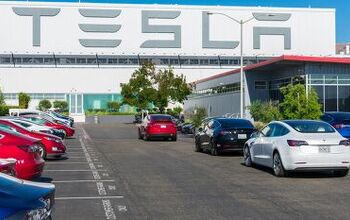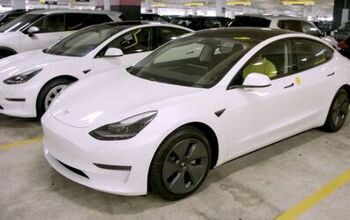EPA In "Consideration Phase" Of Real-World Fuel Economy Testing
As reported earlier, the Environmental Protection Agency is planning to put automakers through real-world testing of their MPG claims. However, the agency is asking this be done on the track instead of the highway.
Edmunds reports the plans are in the “consideration phase,” with the aim of bringing claims in line with what drivers experience on the road, according to an unnamed EPA spokeswoman:
EPA is considering requiring automakers to perform supplemental test-track audits of production vehicles to validate the values for aerodynamic drag and tire friction, which are important data inputs for our laboratory fuel economy testing. Augmenting EPA’s existing pre-production procedures with post-production audits of real-world factors will help further ensure that the data used in EPA labels accurately reflect the vehicles consumers find on dealer lots.
She goes on to clarify that the testing should occur on the track, and that the agency is “not considering creating public roadway test procedures” to replace the results currently gained in the lab.
Seattle-based writer, blogger, and photographer for many a publication. Born in Louisville. Raised in Kansas. Where I lay my head is home.
More by Cameron Aubernon


































Comments
Join the conversation
I'm surprised how many people who spend their days complaining about EPA mileage estimates don't actually understand how it's done. What they are talking about here is coast-down testing. Manufacturers use coast-down figures to estimate aero and mechanical drag, which is then added to EPA runs done on a dyno (because there's no aero drag on a dyno, and some mechanical drag is also absent). In the past, manufacturers were allowed to estimate coast-down figures based on engineering models. The problem with this is that manufacturers would fudge the numbers, boosting their EPA ratings. Hyundai and Ford both got dinged for this, which resulted in huge fines and refunds to owners. Short version: the EPA just said "you can't pull coast-down numbers out of your ass anymore. You have to measure them in the real world using real cars." Will this cost American any money? No. Manufacturers already run these tests. If anything, it will save Americans money because they will have access to more accurate information.
This would be interesting to see and hear from those who are still going to complain. I've been able to match or best the EPA numbers in every 4 cylinder car I've had, the 6s on the other hand... Then you have those like my brother who measures mileage based on tank. I was telling him the mileage estimates for the Buick he's borrowing and he said, "this means nothing to me, I go based on how many tanks I'll go through in a week." I just shook my head and walked away.
The low-hanging fruit of improving the accuracy of EPA window sticker fuel efficiency numbers are 1) accurately measuring the aerodynamic and tire drag as proposed and 2) including higher driving speeds in their test cycle. The big problem for the consumer is normal Americans think highway speed is about 70 mph, but the "highway" test cycle assumes lower speeds where aerodynamic drag is less of an issue. Combine the EPA cycle with European car regulations and American consumers get stuck with tall cars that have to punch an excessively big hole through the air. Lower and longer cars with proportionally smaller wheels could have better real-world highway fuel efficiency, but current rules and incentives discourage this shape of car.
Cars are getting taller because, as with "regular" cars, people are starting to expect more and more space from "small" cars. Which means either they grow taller or longer or both. That tall and short cars are not as economical as longer and lower cars is not lost on automakers. Do note the most recent "mini" cars, such as the Mitsubishi Mirage and the Hyundai i10 (Europe and Asia only, sorry)... are both longer and lower than their competitors. The Mirage has a 0.27 - 0.28 Cd. - For those of us doing economy testing, the EPA is actually way too conservative/pessimistic. Nobody who actually cares enough about economy to adjust their driving style for best economy (not to the point of driving at 40 mph on the highway, mind, but simply staying under the posted limits and not driving like a bat out of hell) gets below EPA. In the end, the real problem with the EPA is spotty auditing. Which this move hopes to rectify. If you're an economical driver, you will consistently get x% better than EPA on cars which are rated properly. If you're a "normal" driver, you will consistently get y% worse. All that's necessary, really, is to ensure that everyone is using the same yardstick.